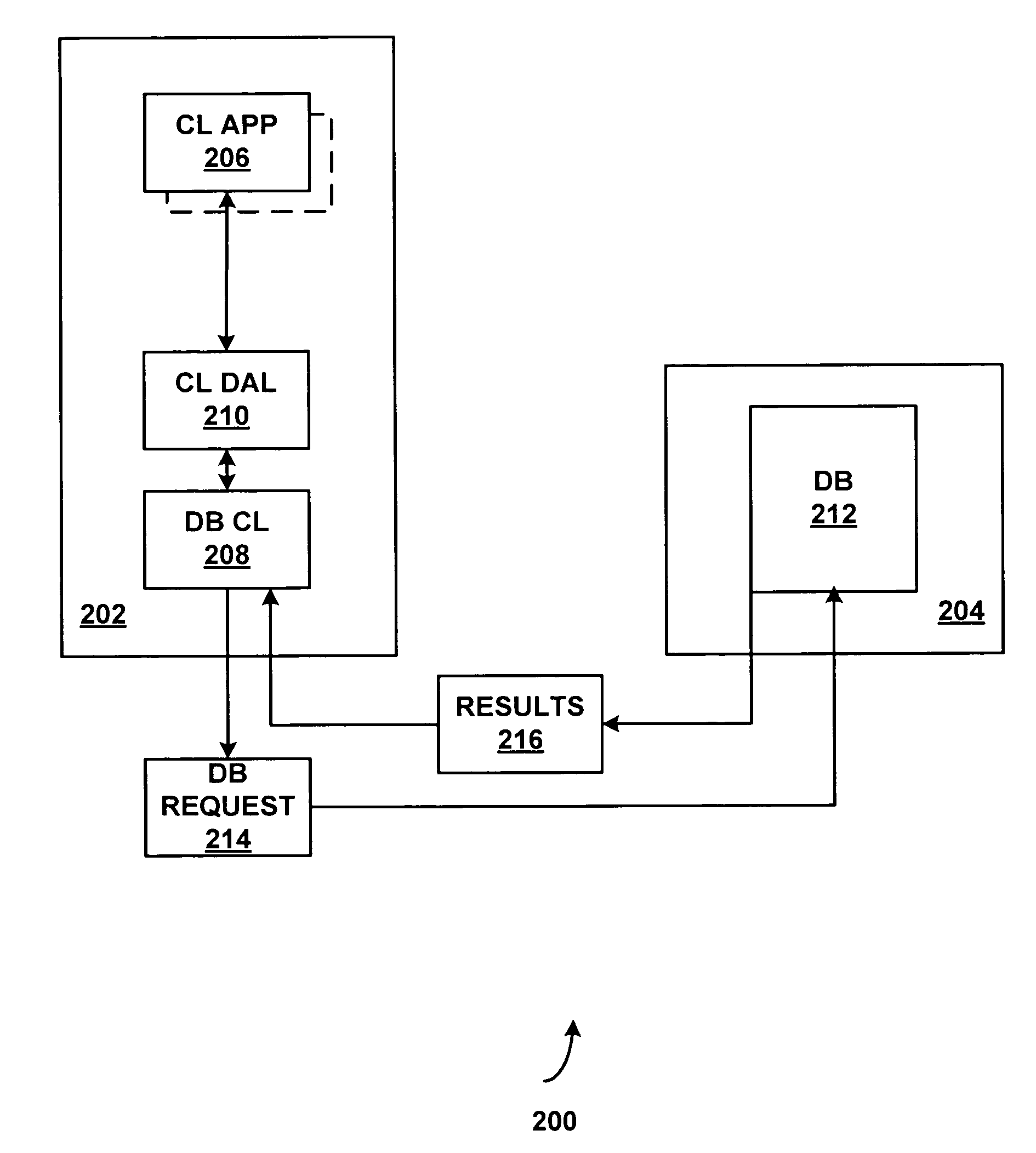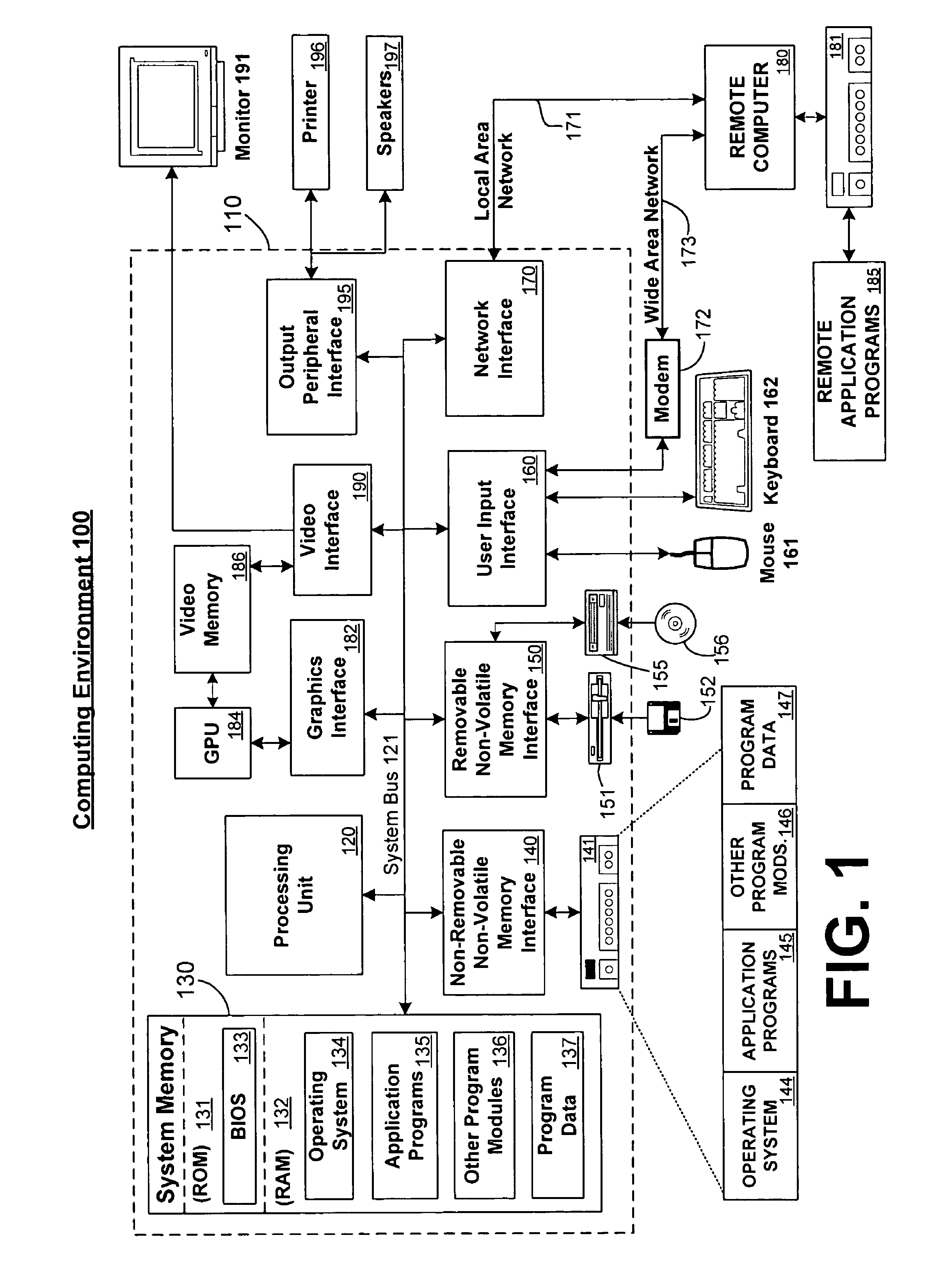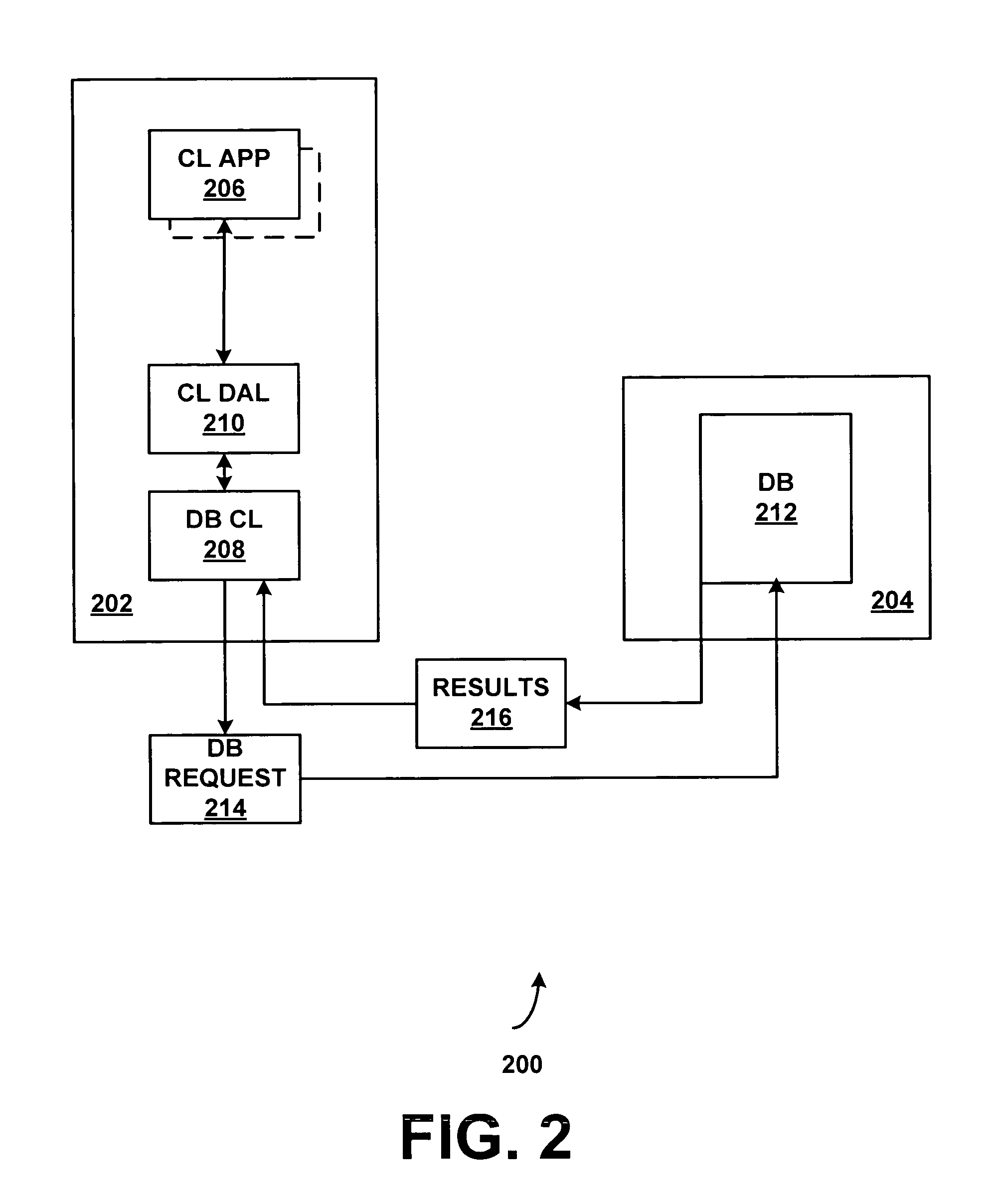Use of server processing of temporary results for stateless paging over arbitrary user queries
a temporary result and user query technology, applied in the field of paging data, can solve problems such as slow comparison between users, problems with scalability, and typical fast speed, and achieve the effect of efficient positioning and retrieval of requested rows
- Summary
- Abstract
- Description
- Claims
- Application Information
AI Technical Summary
Benefits of technology
Problems solved by technology
Method used
Image
Examples
Embodiment Construction
Overview
[0031]In today's world, a user may make a request that resolves to a potentially large set of matches (for example, the results of a search engine search on the Internet). Where the number of rows in the result exceed what can be shown on a single screen, users expect to be able to navigate, or “scroll”, forward and backward through the results, displaying a screen full of data at a time. When the number of rows in the result is very large, having to wait until all the results are transmitted to the client machine may be very undesirable, both in terms of user delay as well as the use of database, network, and client memory and processing resources.
Server Cursors
[0032]Many databases offer the ability to scroll through a set of results through the use of “Server Cursors” (result set cursors maintained within the database). Server cursors provide a convenient model for traversing potentially large sets of results. Server cursors may support the ability to move, forward, backwa...
PUM
 Login to View More
Login to View More Abstract
Description
Claims
Application Information
 Login to View More
Login to View More - R&D
- Intellectual Property
- Life Sciences
- Materials
- Tech Scout
- Unparalleled Data Quality
- Higher Quality Content
- 60% Fewer Hallucinations
Browse by: Latest US Patents, China's latest patents, Technical Efficacy Thesaurus, Application Domain, Technology Topic, Popular Technical Reports.
© 2025 PatSnap. All rights reserved.Legal|Privacy policy|Modern Slavery Act Transparency Statement|Sitemap|About US| Contact US: help@patsnap.com



